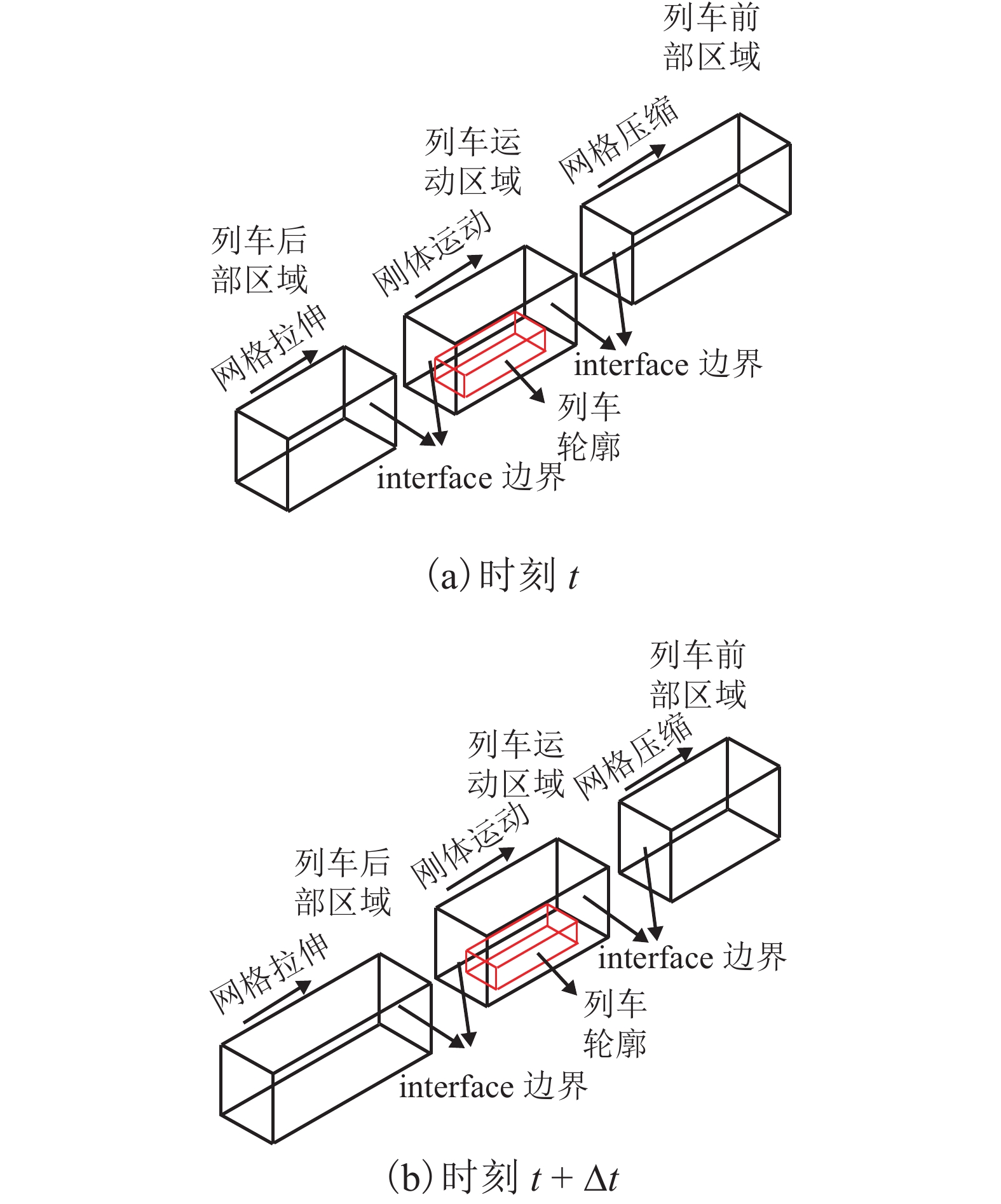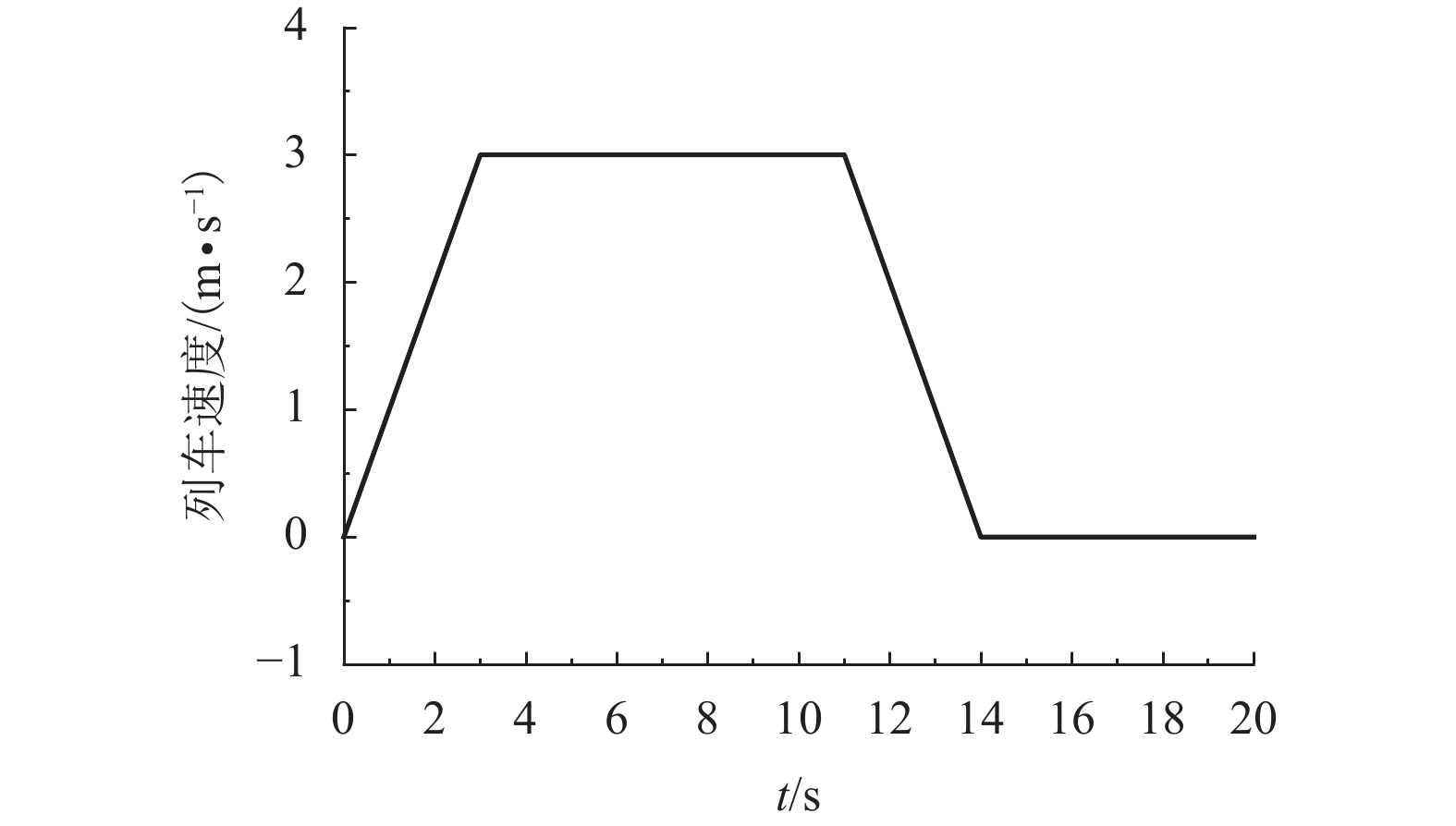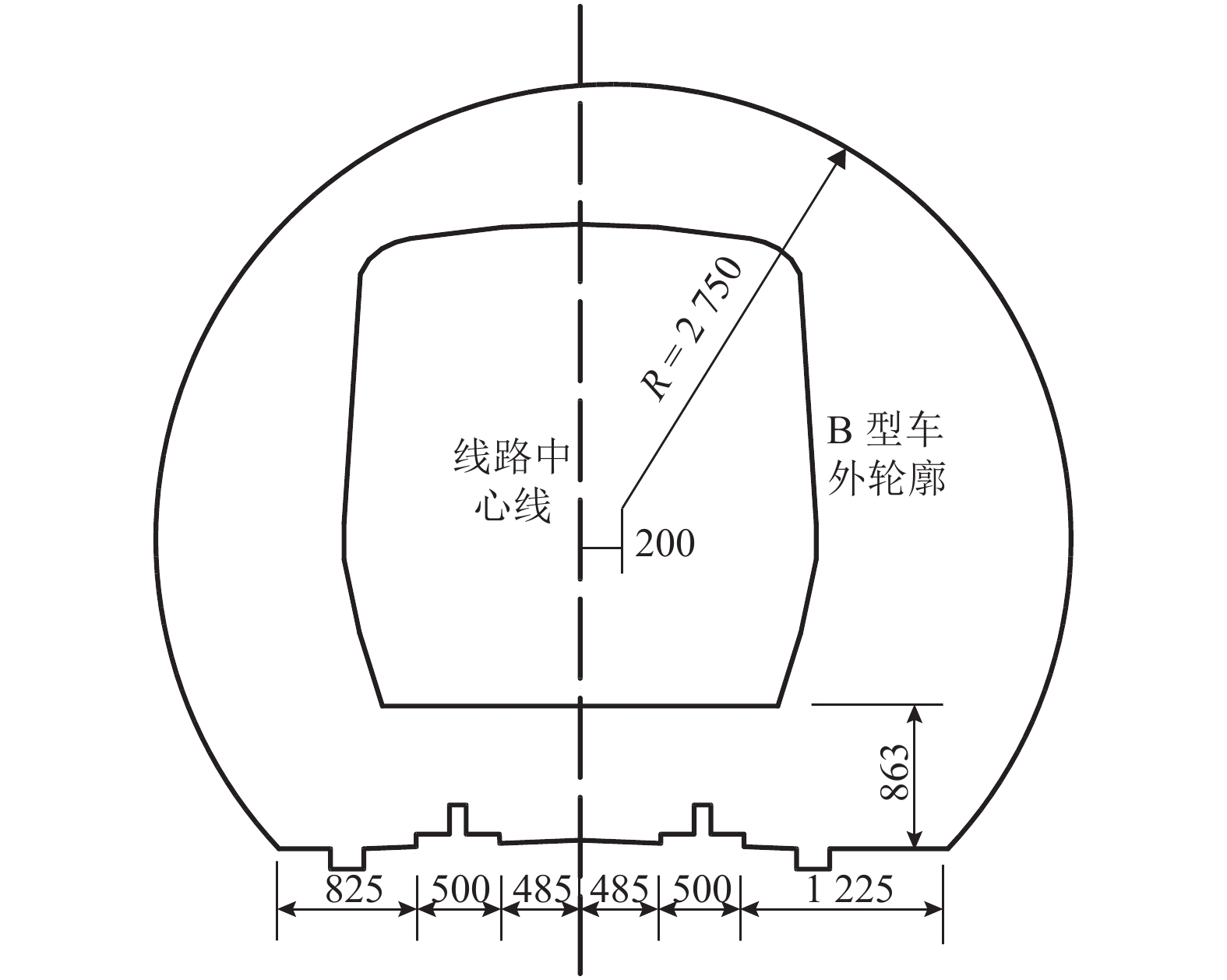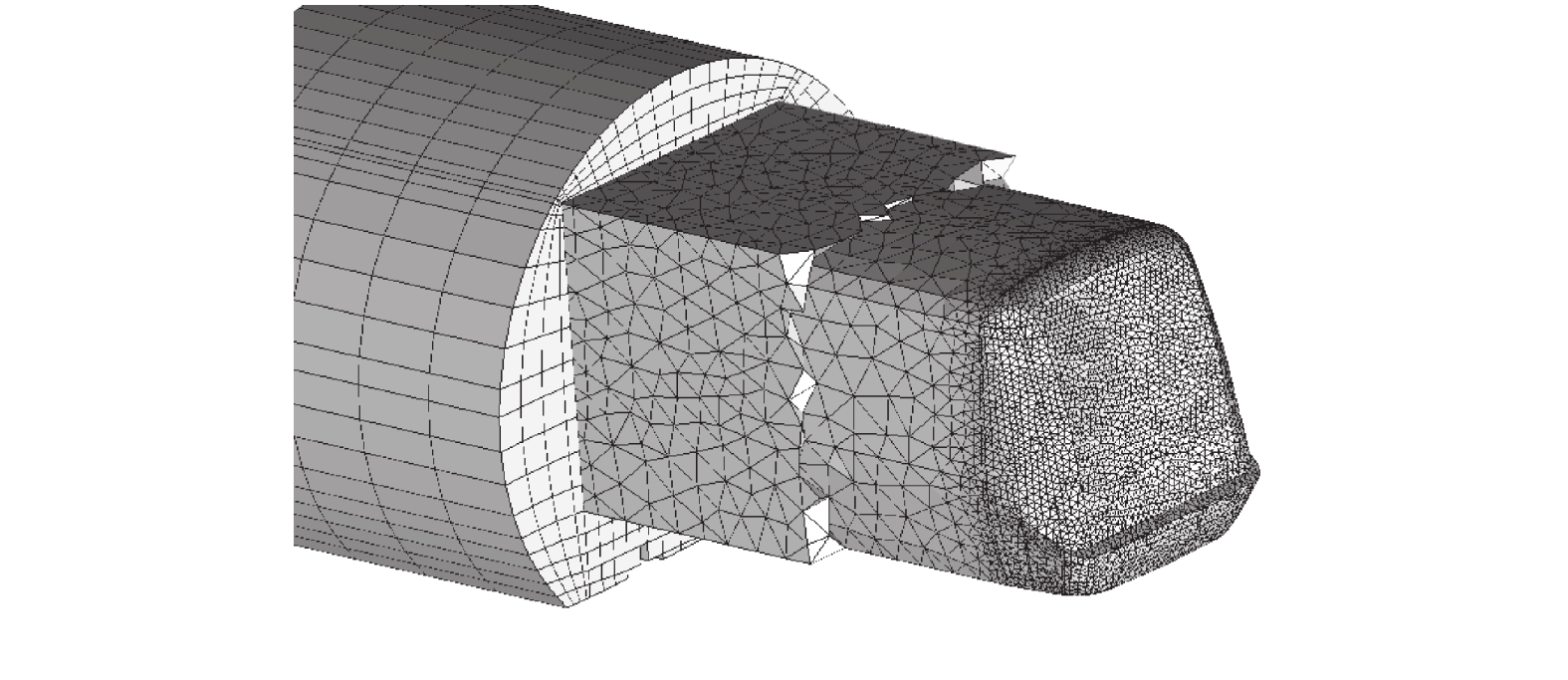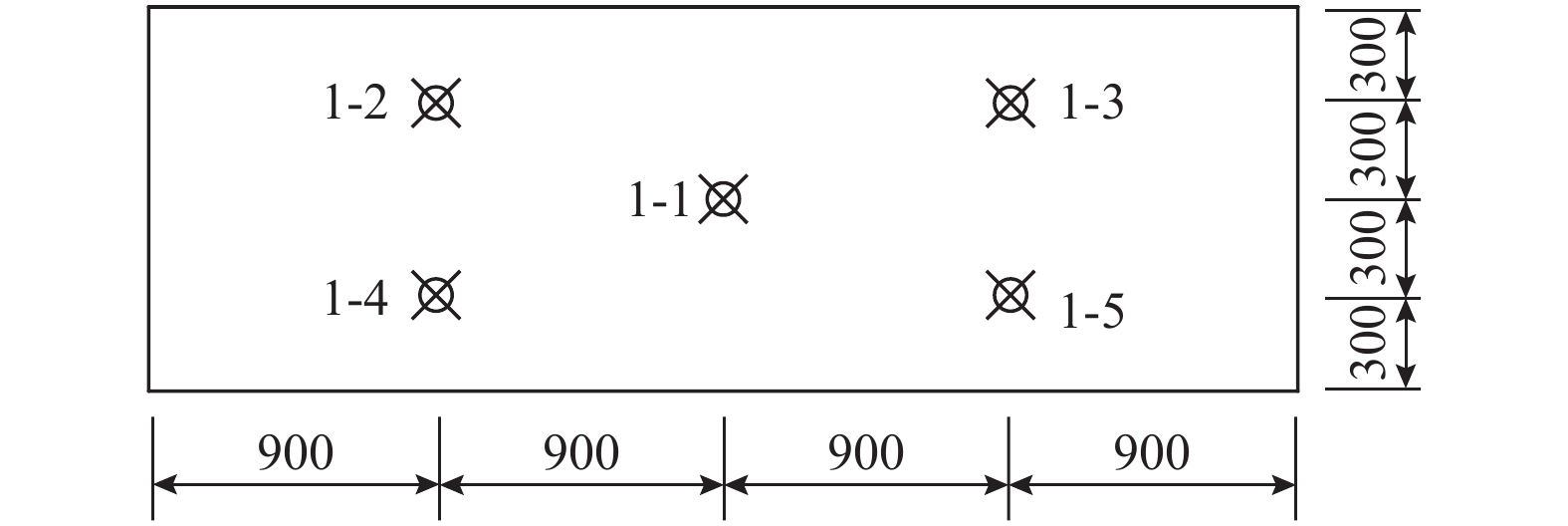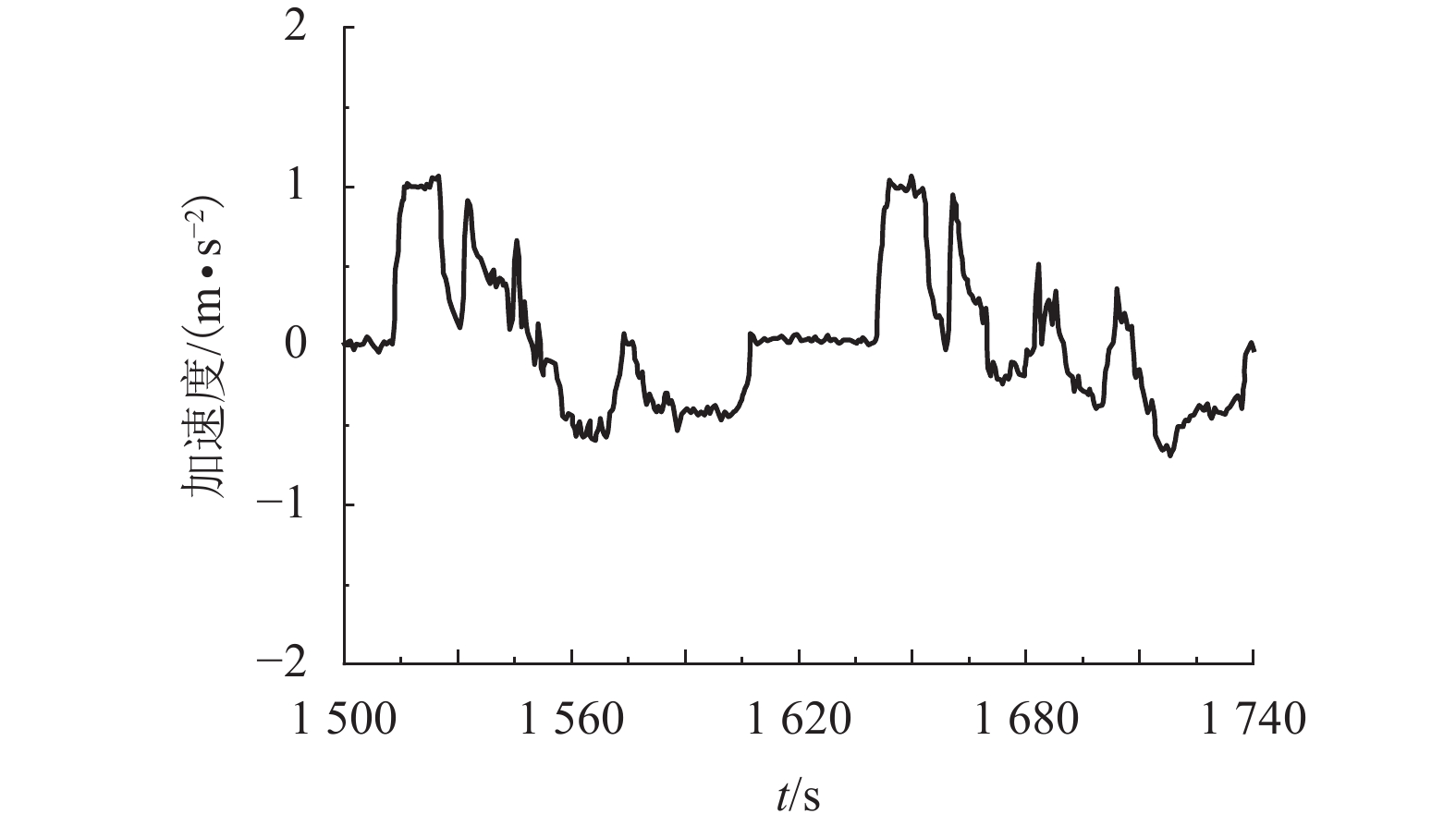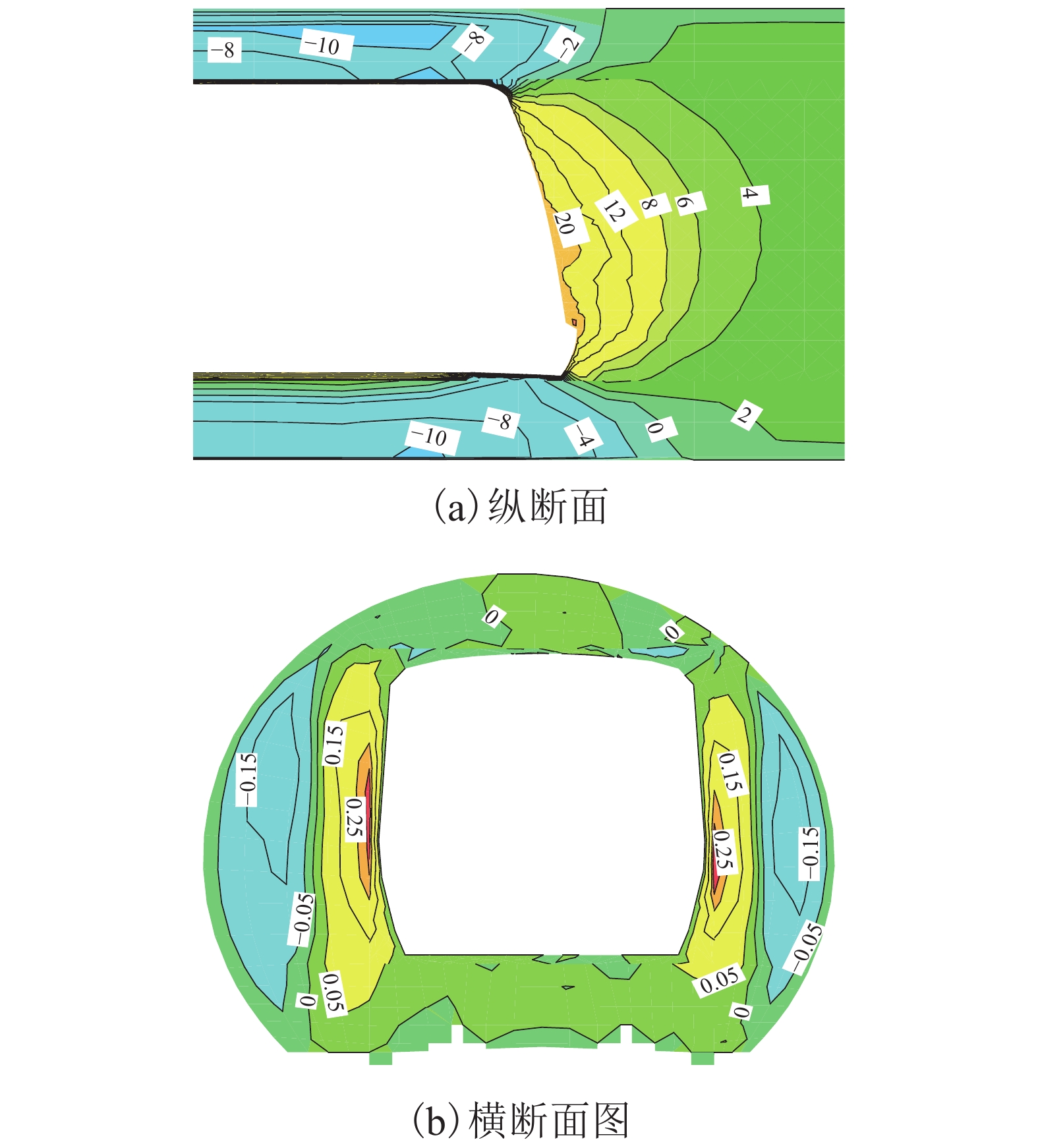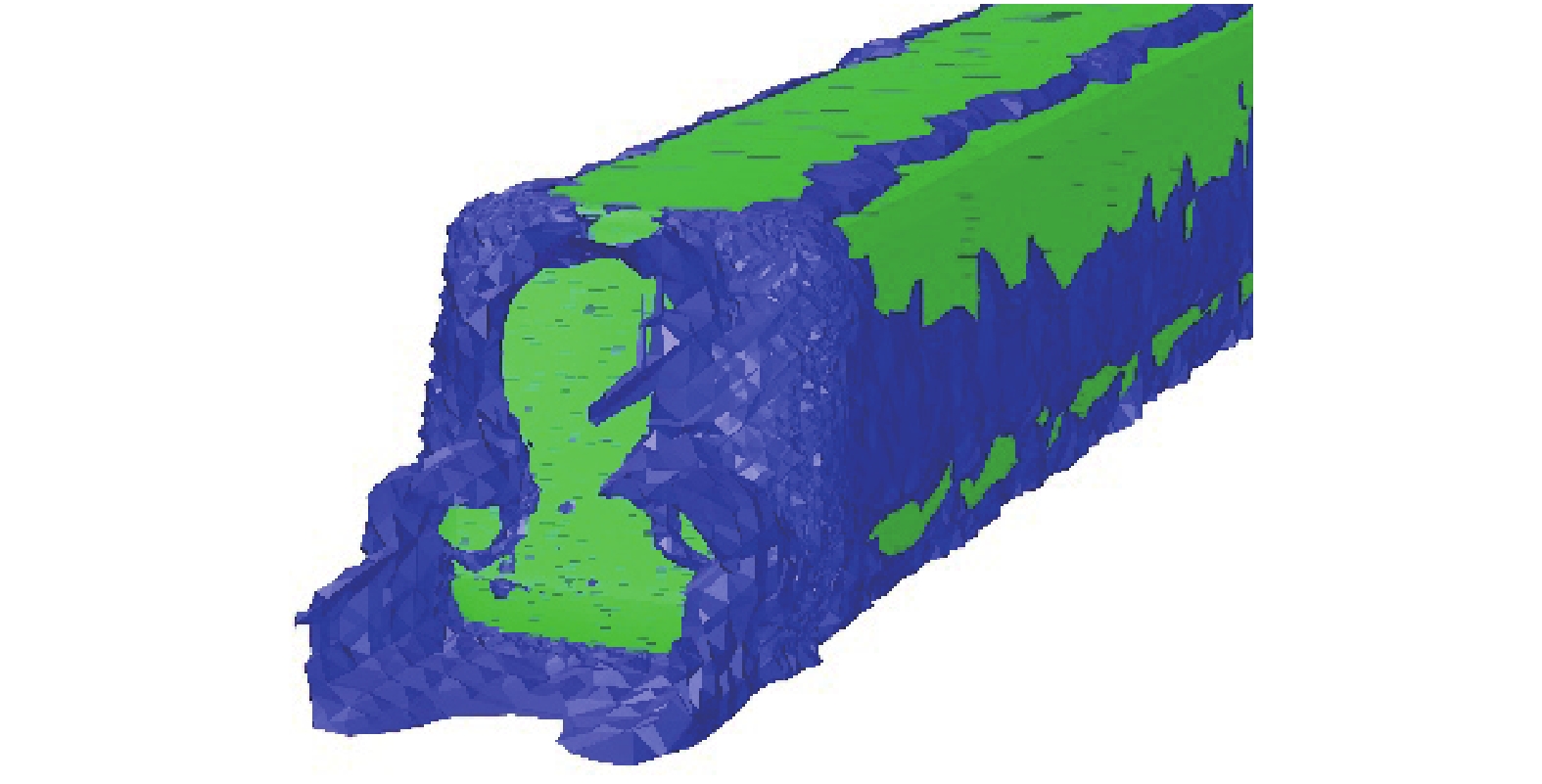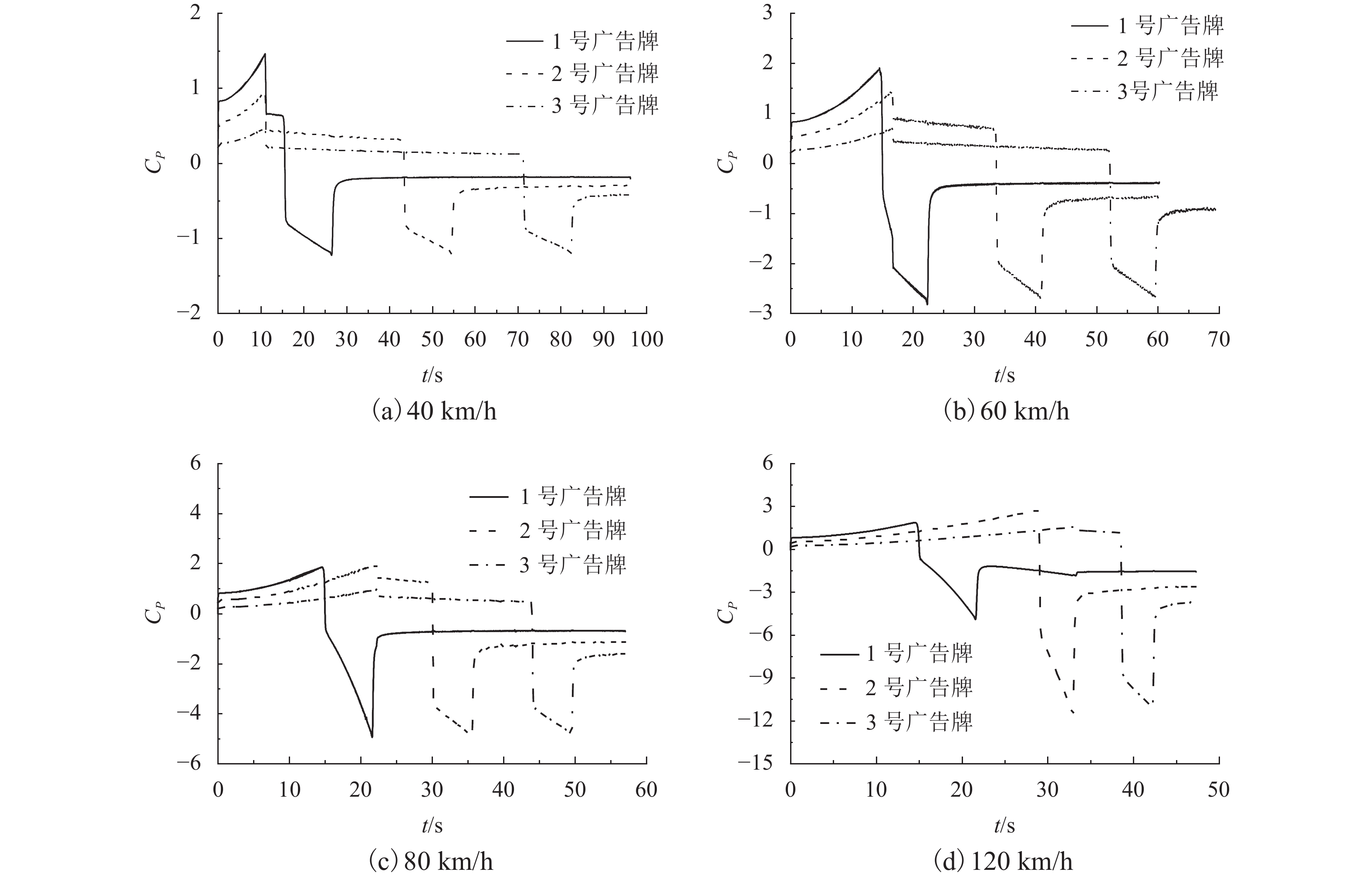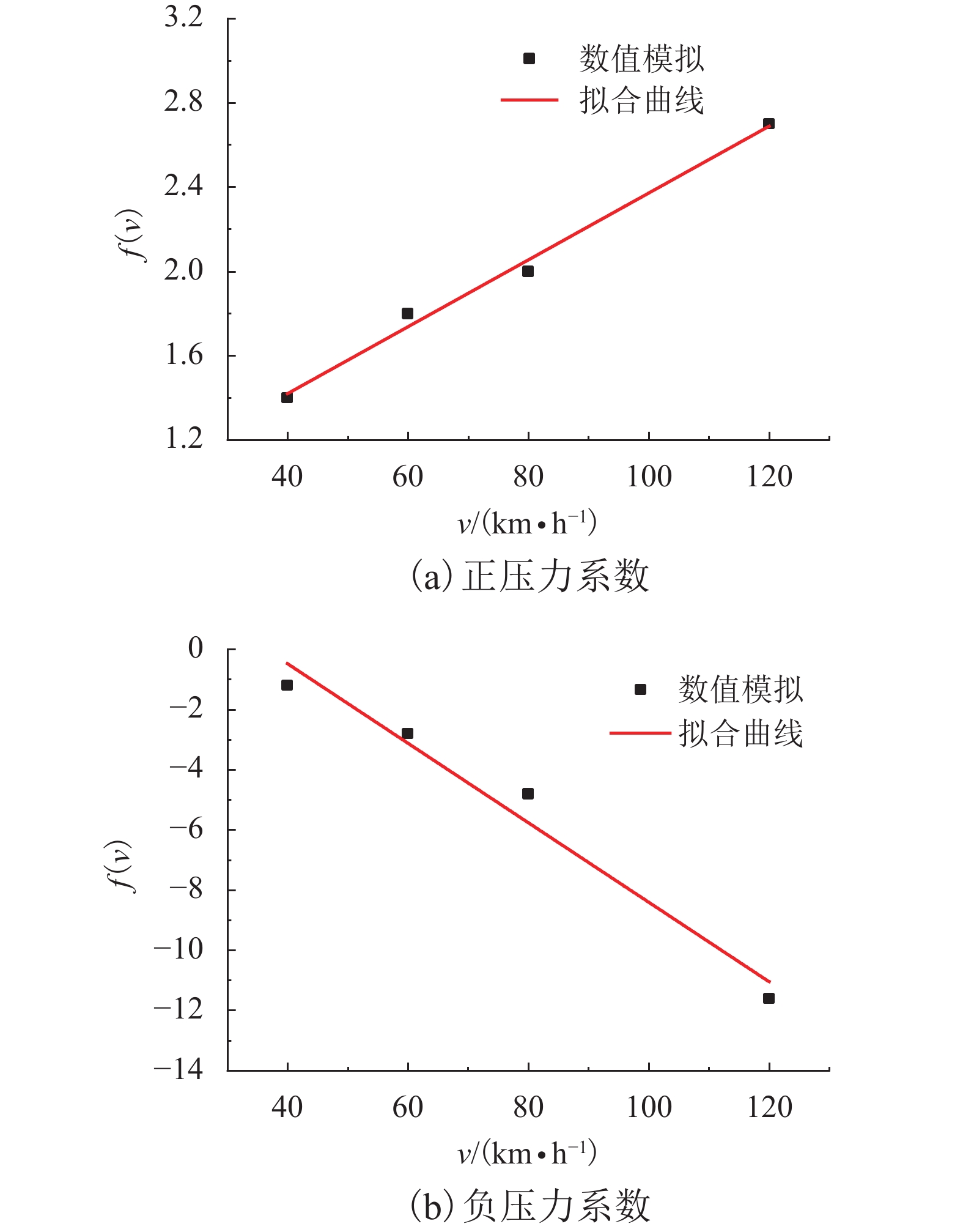Time Variant Characteristics of Piston Wind for Billboards Affiliated with Subway Tunnels
-
摘要: 为了预测地铁隧道内由活塞风效应引起的广告牌表面风荷载的时变特性,采用计算流体动力学(computational fluid dynamics,CFD)开展了活塞风三维非稳态流动模拟. 基于用户自定义函数(user-defined functions,UDF)定义了列车运行控制与动网格控制程序,搭建了精度更高的活塞风模拟方法,并结合以往的实验与仿真,验证了方法的合理性. 在此基础上根据实际隧道断面建立了全尺寸动网格模型,考虑了不同运行速度下由列车运动引起的流场变化,重点关注地铁隧道内不同位置广告牌表面的静压变化. 研究结果表明,列车经过广告牌时表面静压由正变负,速度增加时会导致广告牌表面的静压显著增大,对于80 km/h的工况静压幅值能超过500 Pa;对于部分以120 km/h运行的地铁,静压幅值超过1 kPa.Abstract: In order to predict the time-variant characteristics of a piston wind for billboards in subway tunnels, a simulation based on computational fluid dynamics was employed to solve the three-dimensional unsteady flow problem. User-defined functions were used to define the movement manipulating the train and the dynamic mesh, thereby leading to the establishment of a more accurate simulation method for the piston wind. The rationality of the method was verified according to previously conducted experiments and simulations by Kim. A full-scale tunnel model was then set up based on a real tunnel cross-section. Different train speeds were taken into account to analyse the flow field changes caused by train movements, thus focusing on the changes of the static pressure on the billboard surfaces in subway tunnels. The results show that speed increases cause the static pressure on the billboards to increase significantly, thus changing from positive to negative when the train passes by. The static pressure amplitudes exceed 500 Pa for train speeds of 80 km/h and 1 kPa for some subways at an operating speed of 120 km/h.
-
Key words:
- piston wind /
- dynamic mesh /
- billboard /
- computational fluid dynamics /
- numerical simulation
-
表 1 4种计算工况
Table 1. Four calculation conditions
工况 运行
速度/
(km•h–1)加速
时间/s时间/s 步长/s 仿真
时间/s过1号
广告牌过2号
广告牌过3号
广告牌1 40 11.11 15.47 43.37 71.28 0.010 100 2 60 16.67 14.83 33.54 52.14 0.010 60 3 80 22.22 14.83 30.02 43.97 0.005 60 4 120 33.34 14.83 28.99 38.57 0.005 50 表 2 各广告牌中心监测点处CP值
Table 2. Listing of CP values on monitored points for each billboard
工况 运行速度/
(km•h–1)1号广告牌中心监测点 2号广告牌中心监测点 3号广告牌中心监测点 最大值 最小值 稳定值 最大值 最小值 稳定值 最大值 最小值 稳定值 1 40 1.4 –1.2 –0.2 0.9 –1.2 –0.3 0.2 –1.2 –0.4 2 60 1.8 –2.8 –0.4 1.4 –2.7 –0.7 0.7 –2.7 –0.9 3 80 1.8 –4.8 –0.7 2.0 –4.8 –1.1 1.0 –4.8 –1.6 4 120 1.8 –4.8 –1.5 2.7 –11.6 –2.6 1.6 –11.4 –3.7 表 3 各广告牌压力值
Table 3. Values of static pressure for each billboard
工况 运行速度/
(km•h–1)1号广告牌 2号广告牌 3号广告牌 最大值 最小值 幅值 最大值 最小值 幅值 最大值 最小值 幅值 1 40 105.9 –90.7 196.6 68.1 –90.7 158.8 15.1 –90.7 105.8 2 60 136.1 –211.7 347.8 105.9 –204.2 310.1 52.9 –204.2 257.1 3 80 136.1 –363.0 499.1 151.2 –363.0 514.2 75.6 –363.0 438.6 4 120 136.1 –363.0 499.1 204.2 –877.2 1081.4 121 –862.1 983.1 -
何川,封坤,方勇. 盾构法修建地铁隧道的技术现状与展望[J]. 西南交通大学学报,2015,50(1): 97-109HE Chuan, FENG Kun, FANG Yong. Review and prospects on constructing technologies of metro tunnels using shield tunnelling method[J]. Journal of Southwest Jiaotong University, 2015, 50(1): 97-109 吴妍,高乃平,王丽慧,等. 地铁隧道活塞风井通风性能的数值模拟研究[J]. 建筑科学,2012,28(8): 70-76WU Yan, Gao Naiping, WANG Lihui, et al. Numerical simulation on ventilation performance of vent shafts in a subway tunnel[J]. Building Science, 2012, 28(8): 70-76 廖艾贤. 列车通过单线隧道的空气阻力[J]. 西南交通大学学报,1985,20(1): 89-98LIAO Aixian. Aerodynamic drag of trains in Single tunnels[J]. Journal of Southwest Jiaotong University, 1985, 20(1): 89-98 余南阳. 高速铁路隧道压力波数值模拟和模型试验研究[D]. 成都: 西南交通大学, 2004 KIM J Y, KIM K Y. Experimental and numerical analyses of train-induced unsteady tunnel flow in subway[J]. Tunnelling and Underground Space Technology, 2007, 22(2): 166-172 YUAN F D, YOU S J. CFD simulation and optimization of the ventilation for subway side-platform[J]. Tunnelling and Underground Space Technology, 2007, 22(4): 474-482 KE M T, CHENG T C, WANG W P. Numerical simulation for optimizing the design of subway environmental control system[J]. Building and Environment, 2002, 37(11): 1139-1152 任明亮,陈超,郭强,等. 地铁活塞风的分析计算与有效利用[J]. 上海交通大学学报,2008,42(8): 1376-1380, 1391REN Mingliang, CHEN Chao, GUO Qiang, et al. Numerical analysis and effectively using of piston-effect in subway[J]. Journal of Shanghai Jiaotong University, 2008, 42(8): 1376-1380, 1391 田卫明,翁其能,张建伟,等. 地铁隧道活塞风成风影响因子分析[J]. 重庆交通大学学报: 自然科学版,2012,31(1): 41-43, 47TIAN Weiming, WENG Qineng, ZHANG Jianwei, et al. Analysis of piston wind impact factor in tunnel[J]. Journal of Chongqing Jiaotong University: Natural Science, 2012, 31(1): 41-43, 47 王维,王丽慧. 新建地铁隧道内活塞风温度变化理论分析[J]. 地下空间与工程学报,2014,10(4): 962-967WANG Wei, WANG Lihui. Theoretical analysis on temperature change of piston wind in the new subway tunnel[J]. Chinese Journal of Underground Space and Engineering, 2014, 10(4): 962-967 甘甜,王伟,赵耀华,等. 地铁活塞风Fluent动网格模型的建立与验证[J]. 建筑科学,2011,27(8): 75-81GAN Tian, WANG Wei, ZHAO Yaohua, et al. Establishment and validation of the subway piston wind model with dynamic mesh method[J]. Building Science, 2011, 27(8): 75-81 骆建军. 隧道入口侧风条件下高速铁路隧道内流场特性[J]. 西南交通大学学报,2017,52(4): 746-754LUO Jianjun. Tunnel entrance field characteristics induced by high speed train with crosswind at entrance[J]. Journal of Southwest Jiaotong University, 2017, 52(4): 746-754 骆建军. 高海拔地区高速铁路隧道空气动力学特性[J]. 西南交通大学学报,2016,51(4): 607-614LUO Jianjun. Aerodynamic effect induced by high-speed train entering into tunnel in high altitude area[J]. Journal of Southwest Jiaotong University, 2016, 51(4): 607-614 ANSYS Inc. ANSYS Fluent 15.0 user’s guide [M/OL]. [2016-03-21]. http://www.afs.enea.it/project/neptunius/docs/fluent/html/ug/main_pre.htm 田红旗. 列车空气动力学[M]. 北京: 中国铁道出版社, 2007: 30-37 ZHU F, YU Z, ZHAO L, et al. Adaptive-mesh method using RBF interpolation: a time-marching analysis of steady snow drifting on stepped flat roofs[J]. Journal of Wind Engineering and Industrial Aerodynamics, 2017, 171: 1-11 胡坤, 李振北. ANSYS ICEM CFD工程实例详解[M]. 北京: 人民邮电出版社, 2014: 276-281 江帆. Fluent高级应用与实例分析[M]. 北京: 清华大学出版社, 2008: 205 贾连志,汪侃. 城市轨道交通的车辆选型和列车编组方案选择[J]. 城市轨道交通研究,2012,15(5): 77-79JIA Lianzhi, WANG Kan. On the selection of subway vehicles and marshalling in metro construction[J]. Urban Mass Transit, 2012, 15(5): 77-79 李春超,彭花,左建勇. 地铁列车运行加减速度动态采集与特征分析[J]. 工业仪表与自动化装置,2012(5): 25-27,31LI Chunchao, PENG Hua, ZUO Jianyong. The collecting and character analysis of subway train running acceleration[J]. Industrial Instrumentation & Automation, 2012(5): 25-27,31 赵宇刚,毛保华,蒋玉琨. 基于列车运行时间偏离的地铁列车运行图缓冲时间研究[J]. 中国铁道科学,2011,32(1): 118-121ZHAO Yugang, MAO Baohua, JIANG Yukun. Study on the buffer time of metro train diagram based on train running time deviation[J]. China Railway Science, 2011, 32(1): 118-121 吴健栋,蔡志鹏,汤之南,等. 低周疲劳过程损伤变量的复合分析法和三阶段损伤演化模型[J]. 机械工程学报,2015,51(10): 86-95WU Jiandong, CAI Zhipeng, TANG Zhinan, et al. Combination analyzing method to characterize damage variable and three stage model of fatigue damage in low-cycle fatigue[J]. Journal of Mechanical Engineering, 2015, 51(10): 86-95 -





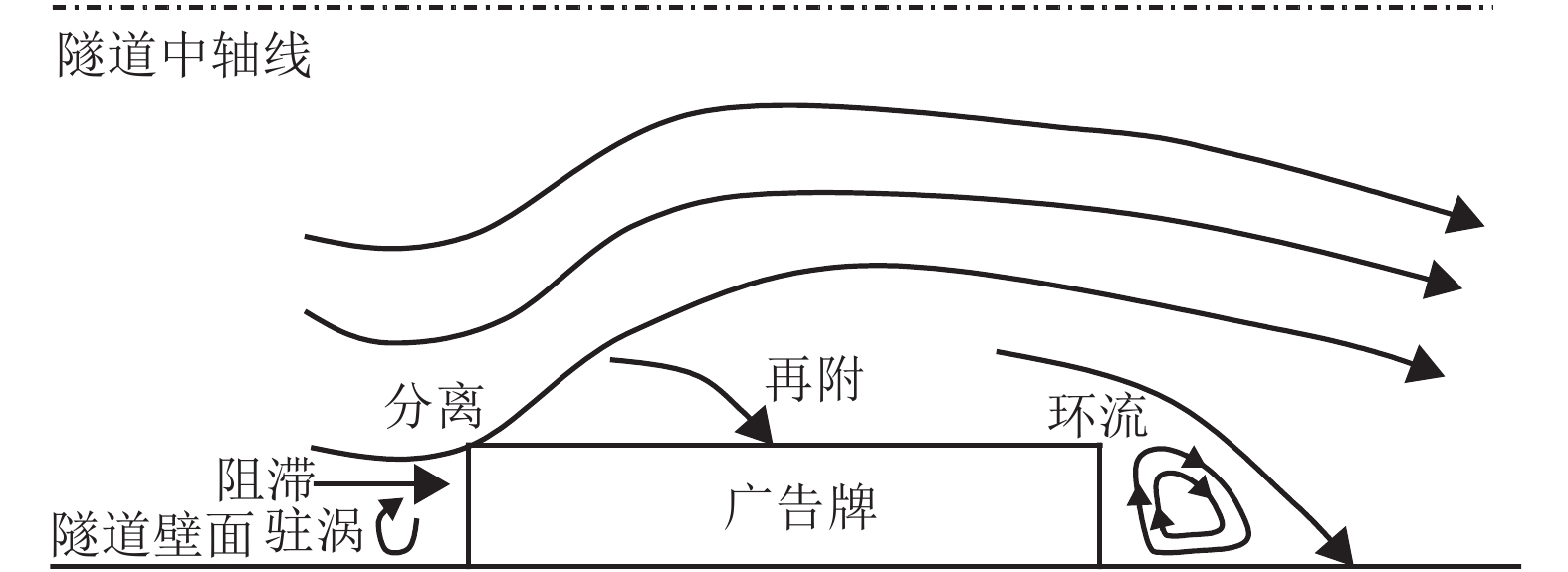
 下载:
下载:
